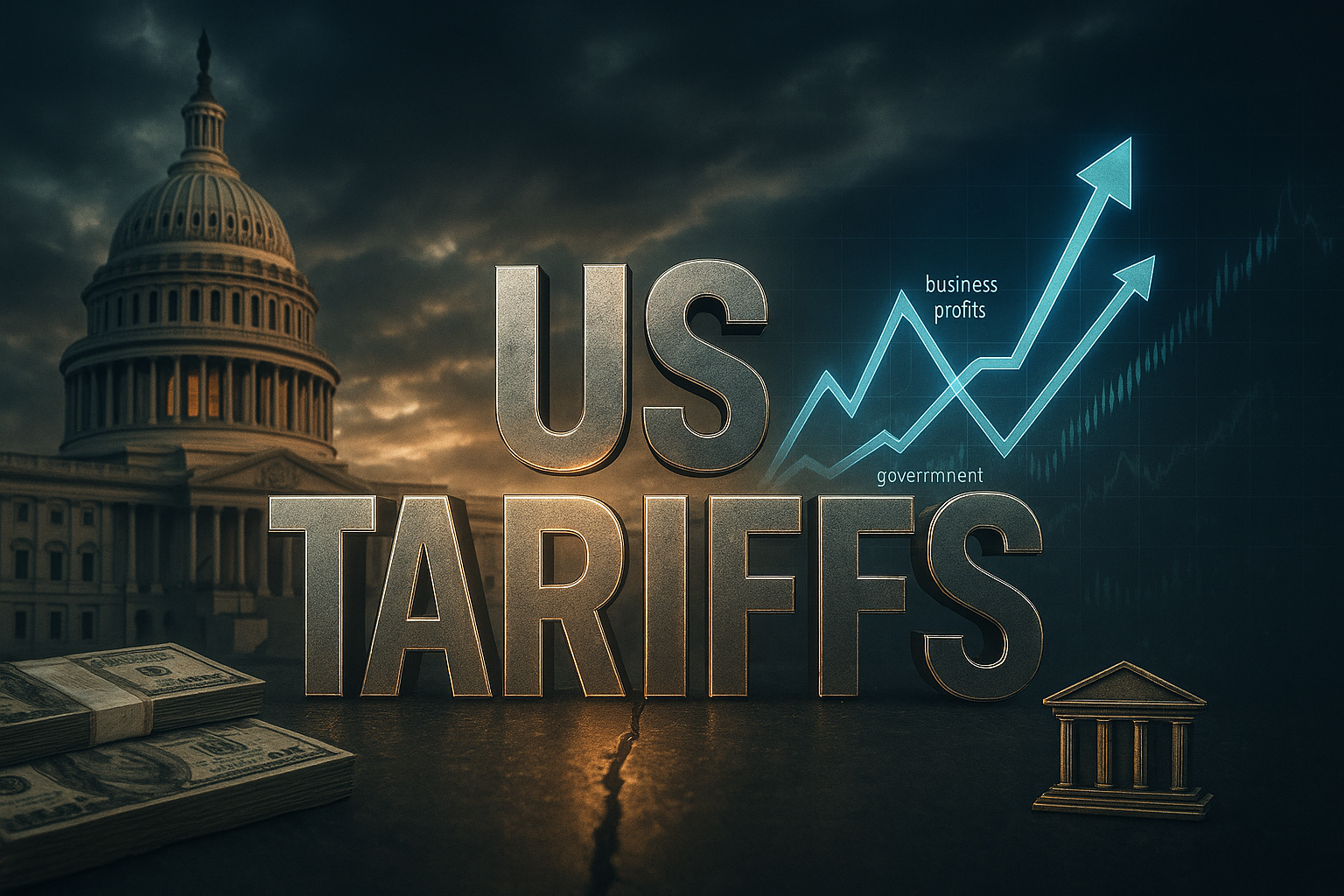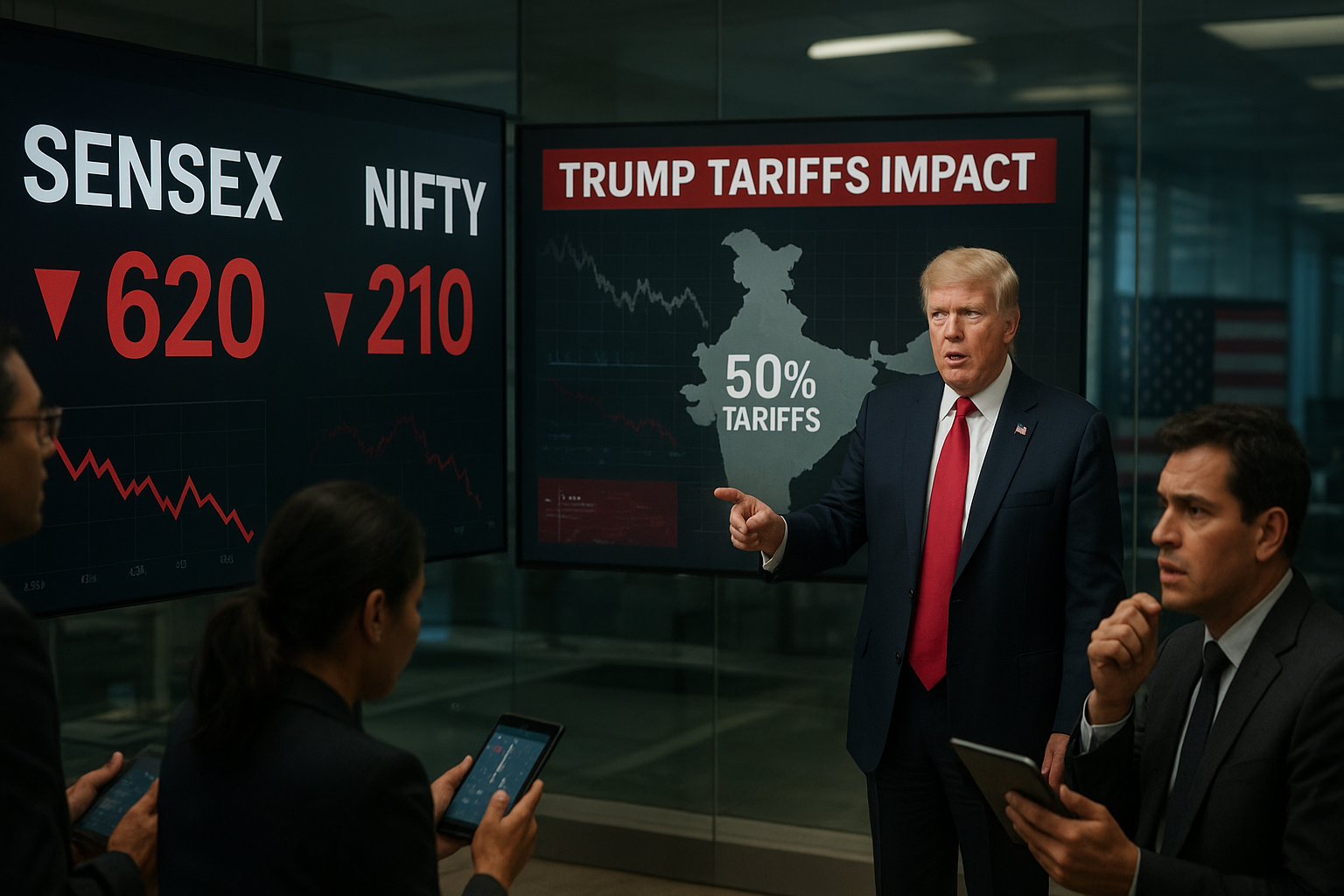Last Updated: September 8, 2025, 02:10 PM

What if billions of dollars collected through US tariff during Trump’s presidency suddenly had to be returned? That’s exactly what Treasury Secretary Janet Yellen hinted at in a recent interview on NBC’s Meet the Press. She revealed that if the Supreme Court rules against the legality of these tariffs, the U.S. government could be forced to refund nearly half of the US tariffs collected since 2025. This startling possibility has already sent shockwaves through businesses, investors, and trade experts, raising questions about the future of American trade policy.
The story of Trump-era US tariffs has always been a rollercoaster. Introduced to protect domestic industries like steel, aluminum, and technology, these tariffs aimed to reduce trade deficits and give American businesses an edge. Yet, economists have long warned that such measures could drive up consumer prices, strain global supply chains, and strain relationships with trading partners. Now, the possibility of refunding billions in US tariffs brings a new layer of uncertainty—and the stakes couldn’t be higher for businesses, consumers, and the U.S. Treasury alike.
Background: The Legal Challenge
The Trump administration imposed US tariffs under the International Emergency Economic Powers Act (IEEPA), which allows the president to regulate commerce in response to unusual threats. However, a federal appeals court recently ruled that these US tariff exceeded presidential authority under the IEEPA, arguing that Congress had not granted sufficient legal power to impose tariffs of this scale.
The Supreme Court is set to hear the case in early November. If the Court rules against the US tariffs, the U.S. Treasury may have to refund nearly $90 billion of the $180 billion collected since August 2025. Such a refund would be one of the largest financial adjustments in recent U.S. history, potentially affecting federal debt levels, investor confidence, and even the country’s standing in international trade negotiations.
Analysts point out that the decision will not just affect U.S. fiscal policy. Internationally, trading partners who were on the receiving end of the US tariff may view a refund as a correction of trade imbalance but could also see it as a signal of U.S. policy unpredictability. This unpredictability could influence future trade negotiations, tariffs, and bilateral agreements.
Economic and Financial Implications

Refunding such a large amount could have multiple effects across the economy:
- Government Debt: Refunding billions in US tariffs may increase federal debt and strain budgets. The Treasury will need to find ways to finance the refunds without causing market panic.
- Market Reactions: Bond markets and investor confidence could fluctuate due to the sudden fiscal obligations. Some investors may view the refund of US tariffs as positive for businesses but concerning for government stability.
- Business Relief: Companies previously burdened by US tariff may see a boost in profitability if refunds are issued, allowing them to reinvest in operations or pass savings to consumers.
- Consumer Prices: Refunds may reduce import costs, potentially lowering prices for everyday products affected by US tariffs, from electronics to automobiles.
- Political Fallout: A Supreme Court ruling against the US tariff could weaken the legacy of Trump-era trade policies and shape the narrative for future political debates.
- Legal Precedent: The case may define presidential authority over trade policy for years to come, influencing how future administrations impose US tariffs or trade restrictions.
Economists have emphasized that the refund may not immediately reverse all effects of US tariffs. Many businesses have already adjusted their supply chains, raised prices, or changed investment plans in response to US tariffs. While refunds help financially, the broader structural impact on the economy may take months or years to fully manifest.
US Tariff Impact Comparison
| Impact Area | With Trump US Tariffs | Without Tariffs / Refund Issued |
|---|---|---|
| U.S. Government Revenue | High ($180B) | Moderate (Refund reduces revenue) |
| Business Profit Growth | Moderate | High (refunds improve cash flow) |
| Consumer Prices | Higher | Lower (tariff refund reduces import costs) |
| Investor Confidence | Moderate | Higher (markets stabilize) |
| Fiscal Pressure on Treasury | Moderate | High (refund payout stress) |
This comparison highlights how the balance of benefits and costs of US tariffs shifts depending on whether tariffs remain or are refunded. While US tariffs initially increased revenue for the government, they also restricted business profitability and increased prices for consumers. Refunds can correct some of these negative effects but create new fiscal pressures.
Political Considerations
The Supreme Court case also carries significant political weight. A ruling against US tariffs may be interpreted as a rebuke of Trump’s trade policies, which were central to his “America First” agenda. Lawmakers and trade advocates may debate whether the decision sets a precedent for executive authority in imposing US tariffs without explicit congressional approval.
Additionally, the refund could influence future elections, as voters and businesses react to the government’s handling of the financial and economic fallout. Political analysts suggest that trade policy credibility and US tariffs strategy may become a key talking point for both major parties in upcoming campaigns.
Broader Trade Implications
Beyond domestic politics, the outcome of this case could affect international trade relationships. Many countries affected by US tariffs may welcome a refund as a form of reconciliation, which could smooth trade tensions. However, the uncertainty surrounding U.S. trade policies and US tariffs may also make foreign businesses hesitant to rely on American import/export regulations, impacting long-term trade agreements.
Some experts also warn that the case could encourage similar legal challenges in the future. Companies and trade partners may challenge other trade measures if they believe the executive branch has overstepped its authority, potentially slowing down trade policy implementation.
Key Takeaways
- The Supreme Court decision could result in refunds of nearly $90 billion of US tariffs, affecting Treasury finances.
- Businesses burdened by US tariffs could see improved profitability, which may stimulate reinvestment.
- Consumer prices might decrease, helping households offset inflationary pressures caused by US tariffs.
- Legal precedent may limit presidential authority in future US tariffs and trade policies.
- Political and international trade implications are significant, influencing elections and trade negotiations related to US tariffs.
Conclusion
The upcoming Supreme Court decision on Trump-era US tariffs represents a critical juncture in U.S. trade and economic policy. The potential refund of billions highlights the complex interplay between executive authority, legal interpretations, and economic consequences. While businesses and consumers may benefit from refunds, the Treasury faces significant fiscal pressure, and the political fallout may reverberate for years.
As the nation awaits the ruling, economists, investors, and policymakers are closely monitoring developments, knowing that the outcome will shape the future of US tariffs, trade policy, and economic stability in the United States.
- US tariffs are taxes imposed by the United States government on imported goods.
- They are designed to protect domestic industries, reduce trade deficits, and influence trade negotiations.
- The tariffs targeted products like steel, aluminum, and technology sectors.
- While meant to protect American businesses, they raised import costs, strained supply chains, and created tensions with trading partners.
- Yes, Treasury Secretary Janet Yellen indicated that if the Supreme Court rules against the legality of these tariffs, refunds may be required.
- Nearly half of the tariffs collected since 2025 could be returned to businesses and importers.
- Businesses burdened by tariffs could see a boost in profitability.
- Refunds would improve cash flow and allow companies to reinvest or reduce prices for consumers.
- Refunding US tariffs could strain the Treasury’s finances and temporarily increase government debt.
- It could also stabilize markets, reduce consumer prices, and improve investor confidence.
- Not necessarily. The Supreme Court ruling would only determine the legality of the specific tariffs in question.
- Some tariffs may remain, while others could be refunded if deemed unlawful.
